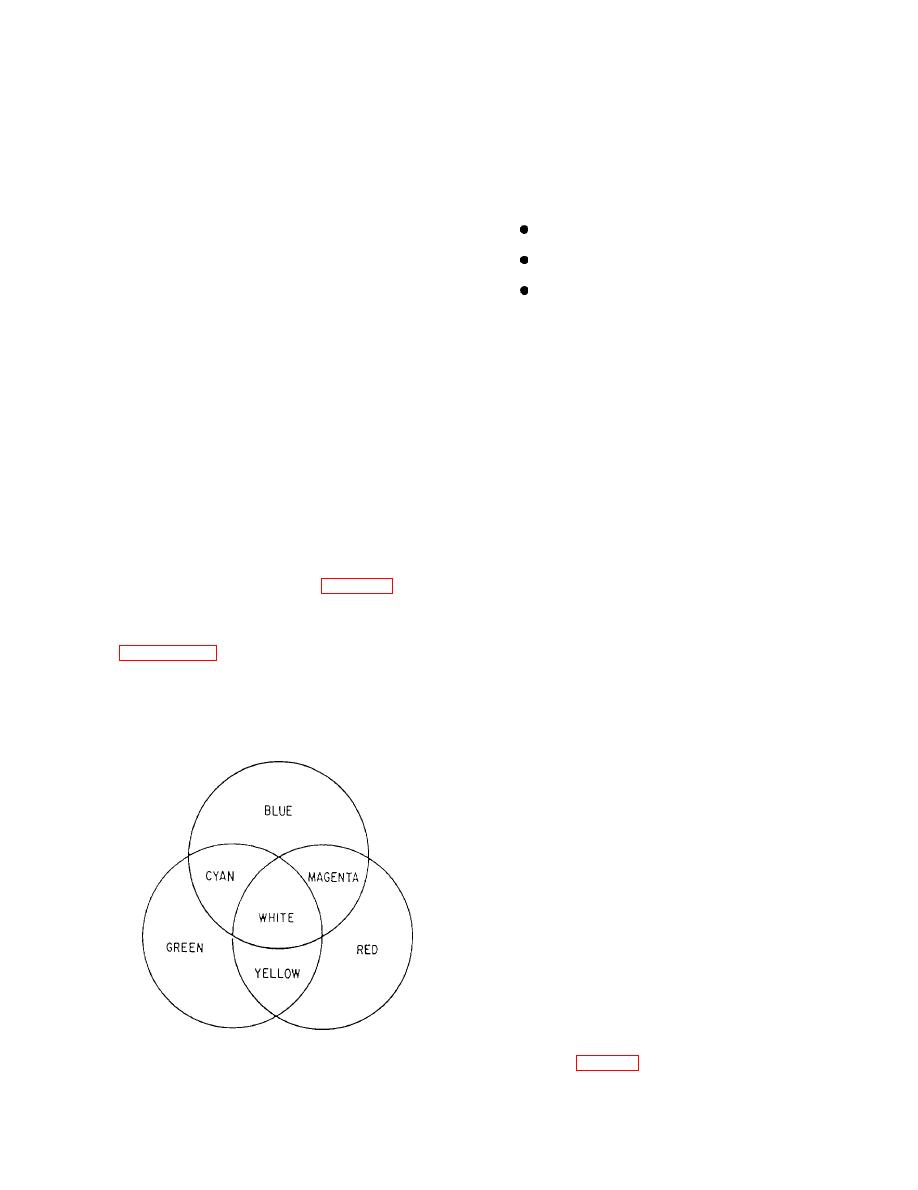 |
|||
|
Page Title:
Figure 8-11.--The additive primaries. |
|
||
| ||||||||||
|
|
 another color is produced. Green and blue produce
A special lens called the zoom lens is used for
cyan (greenish blue). Blue and red produce magenta
special effects. This lens can be varied from the
(bluish red). Red and green produce yellow.
normal visual coverage to distant closeups. In some
installations the lens is manually adjusted, while in
The combining of two primary colors, in
other TV cameras it is motor driven. The lens may be
proportional amounts, produces the new color.
adjusted either manually or by an automatic
However, when all three colors are combined as units
motor-driven device.
and in percentage of color, the result is white. Note the
following combination:
COLOR TV
One red unit represents 30 percent red
One green unit represents 59 percent green
It is known that normal vision is in color. The
human eye, in association with the brain, picks up the
One blue unit represents 11 percent blue
reflected light and imagines the scene in color. When
When one unit of green is combined with three
you view a colored painting, the object appears as a
units of red, the result is orange. By changing the
solid section of color. But, upon close inspection, it is
proportions of red and green, a variety of colors
seen that what appeared as solid color is really
between red and green can be produced. As the
individual brush lines. The same method is used in
proportion of the primary color mixture changes, the
television to make color appear solid on the face of a
resultant color also changes.
picture tube. Small spots of color instead of brush lines
make up each solid color.
The color by itself is called the hue. Green leaves
have a green hue. A red apple has a red hue. Different
PRINCIPLES OF COLOR
hues result from different wavelengths of light. Red
has the longest wavelength; violet has the shortest.
The principles of color presented in the following
The term saturation indicates how little a color is
paragraphs apply specifically to the development of
diluted by white light. The more a color differs from
color television pictures.
white, the greater its saturation. A weak blue color has
The three primary colors (fig. 8-11) used in
little saturation, while vivid blue is highly saturated.
television are red, green, and blue. When two primary
Saturation is interchangeable with the terms purity and
colors are combined, they produce another color.
chroma.
The brightness of a color as perceived by the
represent the three additive primary colors. In the
human eye is called luminance. The human eye sees
center where all three overlap, the color white is
brightness increase from blue to a peak at green and
formed. In sections where two primary colors overlap,
then decrease again to red. This apparent response
curve is the standard CIE (International Commission
of Illumination) luminosity (brightness) curve.
Color resolution is the full three-color reproduc-
tion of the red, green, and blue primaries.
Monochrome (black-and-white) reproduction is used
for the smallest details. For example, in the televised
picture of an automobile, the entire body of the car
would be in full color. Narrow vertical strips on the
frame might be reproduced in two colors, while the
outline of the car where it joins the background would
be in black and white.
TRANSMISSION
The camera unit used for color pickup is similar
to the black and white camera. However, the color
camera unit (fig. 8-12) has three pickup tubes (one for
|
|
Privacy Statement - Press Release - Copyright Information. - Contact Us |